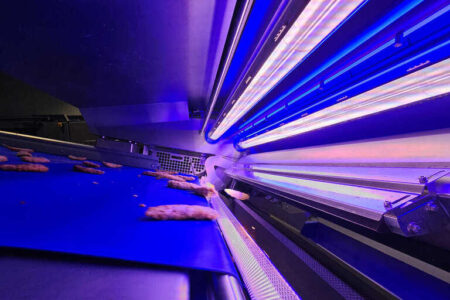Integrated verifier for barcode labels
Logopak International has launched its first ever integrated verifier, as part of its print and apply offering.
Barcode verification procedures that are demanded by retailers to ensure label legibility at every point in the supply chain can now be carried out automatically to ISO standards as part of the labeling process, using Logopak’s new high-speed quality control system. It allows all pallet and case labels to be verified online, rather than samples taken from a run, and the labels graded to ISO or ANSI standards laid down by GS1, the international barcode standards organisation.
“Up to now, verifying instruments have required calibration and controlled lighting conditions such as a QA lab could provide, so manual sampling methods were employed on an offline basis to ensure that labels would read and avoid severe financial penalties from retailers,” explains Logopak sales director, Howard Jagger.
“Even so, there was no guarantee that every label would meet the retailers’ standards and rogue labels could pass through undetected, possibly triggering a penalty of £500 or more.”
The Logopak system replaces scientific instruments with an industrial-quality unit using technology licensed exclusively from verification specialist Axicon. The innovative mechanical design integrates verification with the print and apply machine, allowing all labels to be checked continuously as they are applied.
It provides full evaluation of the barcode characteristics as laid down by GSl, as well as diagnostic data for remedial action should a barcode fail to meet the minimum standard set.
“A worrying number of print and apply labelling machine users still seem to rely on scanning alone to check their pallet and case labels,” Jagger continues. He points out that just because a barcode scans correctly on the production line, this does not necessarily mean it will read correctly at every point in the supply chain.
“It simply tells you that the barcode is the right code and good enough to be read by that particular scanner, under the conditions at that time, but nothing more. Along the supply chain, the code will need to be read, for example, by different types of scanners, at varying distances and angles and at different conveyor speeds.”
This is where verification comes in, he explains. It reads the black and white bars, but then goes on to evaluate characteristics such as nominal/actual print contrast signal, light and dark reflectance, ratio and magnification variation, check-sum analysis and metric deviations. From all this a quality grading is given, as well as any diagnostic data required for remedial action.
Jagger concludes, “There has never been a short cut to verification. It can only be carried out with an instrument that conforms to the international standard ISO/IEC 15426-1. The difference now is that, with the Logopak system, every bar code can be verified”.



